Umiak Model Item Number: E1098-0 from the National Museum of Natural History


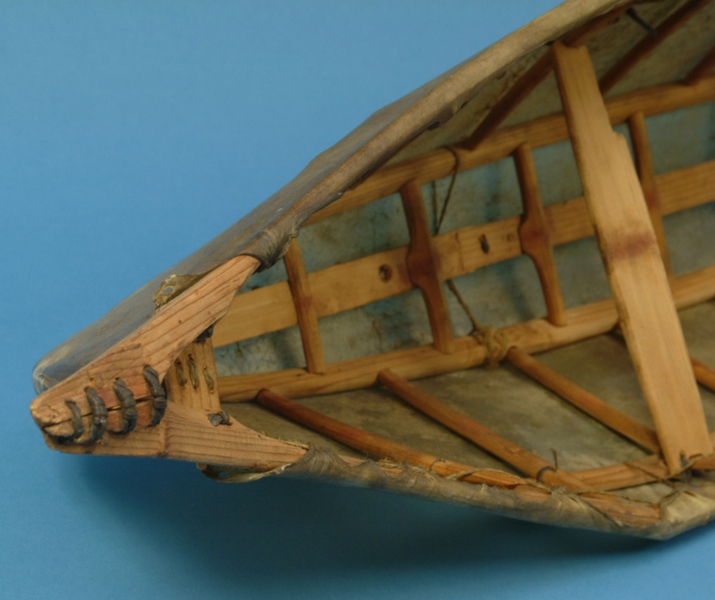
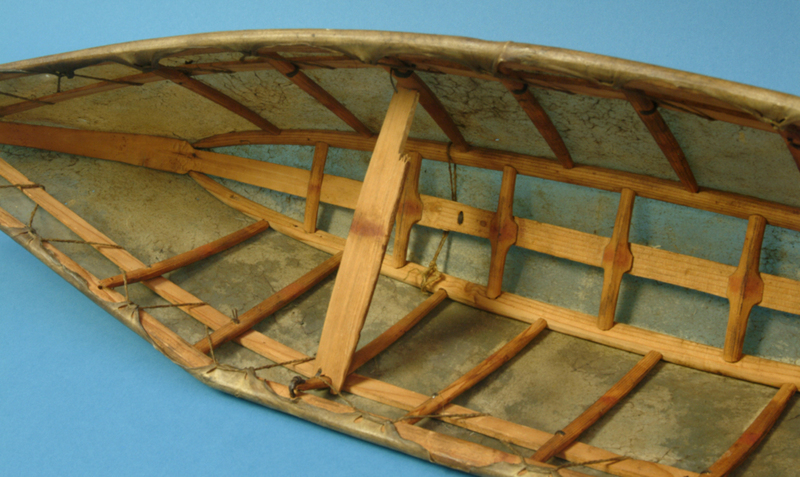

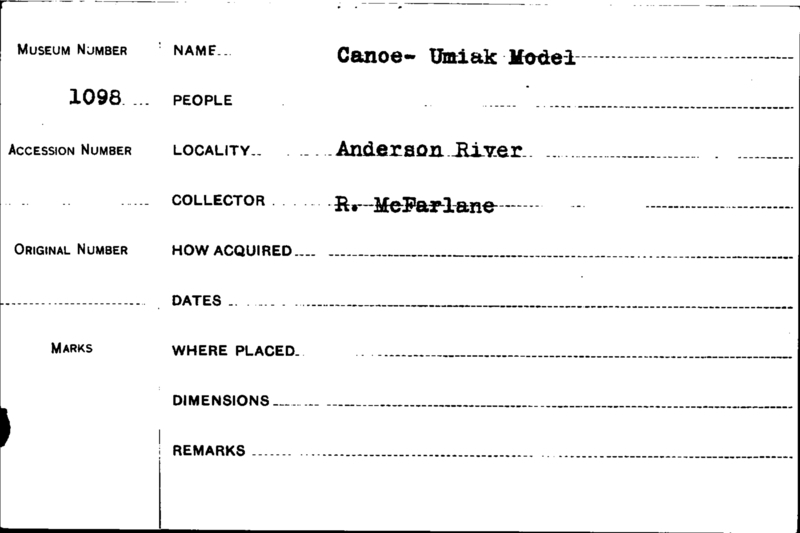
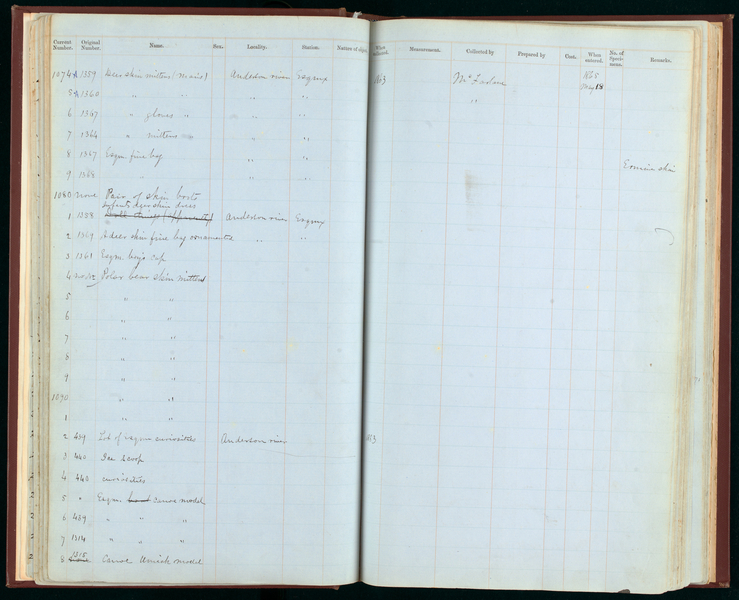

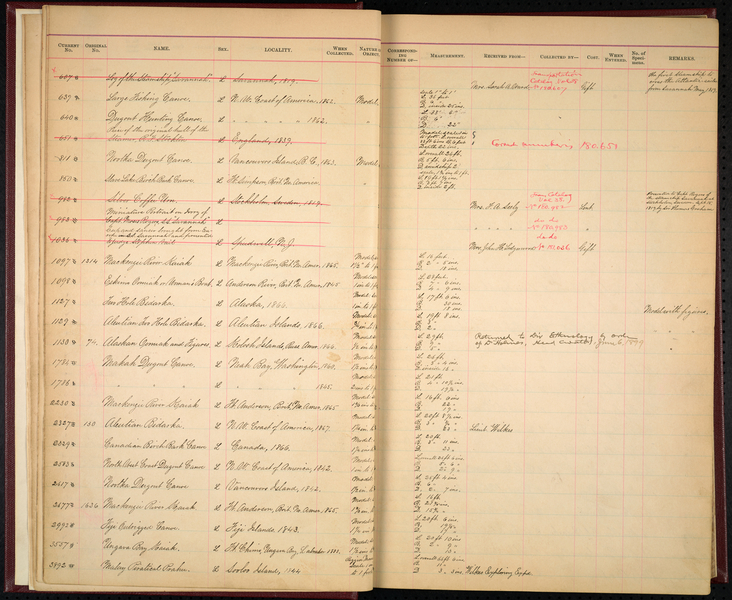
Notes
See Collins boat MS. p. 822. Note that 1098 is mentioned as being used in an exhibit in Berlin in 1880 on p. 104 of USNM Bulletin No. 18. It is described there as an Umiak model, Fort Anderson, H.B.T., Robert [sic, should be Roderick] MacFarlane.Source of the information below: Inuvialuit Pitqusiit Inuuniarutait: Inuvialuit Living History, The MacFarlane Collection website, by the Inuvialuit Cultural Resource Centre (ICRC), Inuvik, N.W.T., Canada (website credits here http://www.inuvialuitlivinghistory.ca/posts/12 ), entry on this artifact http://www.inuvialuitlivinghistory.ca/items/164 , retrieved 12-10-2019: Model of an umiaq with hide covering and frame made from wood. The individual frame elements are joined by mortise and tenon joints and by use of lashings that pass through drilled holes. The hide cover is made from several pieces of caribou hide with the hair removed. The cover is attached to the frame with sinew passed through holes cut into the skin and wrapped around the gunwales. More information here: http://www.inuvialuitlivinghistory.ca/item_types/59: The umiaq is a large open boat with a wood frame and a skin covering that was used for transportation and for hunting whales. An umiaq typically was about 10 m in length, 2m wide and about 1 m deep. An umiaq that size could carry a dozen or more people. Umiaqs were well suited to traditional Inuvialuit life. They were a shallow draught watercraft, and could be used in shoals and close to shore without fear of grounding. They had flat bottoms, which made them stable in the water, they could carry large loads and the tough hide covering was difficult to damage. If the covering was damaged, it could be easily repaired with a patch. They were light enough for two people to carry, and could be moved over snow and ice on sleds. Umiaqs were propelled by paddles and with sails made from intestines sewn together. MacFarlane collected models if the original object was too large or too difficult to ship to the Smithsonian Institution.
Item History
- Made in Northwest Territories, Canada
- Collected in Northwest Territories, Canada
- Received from Roderick R. MacFarlane on May 18, 1865
What
- Name
- Umiak Model
- Identification Number
- E1098-0
- Type of Item
- umiak model
Who
- Culture
- Eskimo, Inuit and Inuvialuk
- Received from
- Roderick R. MacFarlane
Where
- Holding Institution
- National Museum of Natural History
- Made in
- Northwest Territories, Canada
- Collected in
- Northwest Territories, Canada
When
- Acquisition Date
- on May 18, 1865
Other
- Accession Number
- 65A00065